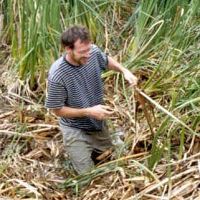Biederman et al., 2016
Ecosystem CO2 Exchange Across Semiarid Southwestern North America: A Synthesis of Multi-Year Flux Site Observations and its Comparison with Estimates from Terrestrial Biome Models and Remote Sensing
Biederman, J.A.; Scott, R.L.; Goulden, M.; Litvak, M.E.; Kolb, T.; Yepez, E.A.; Garatuza, J.; Oechel, W.C.; Krofcheck, D.J.; Ponce-Campos, G.E.; Bowling, D.R.; Meyers, T.P.; Maurer, G. (2016)
Fall Meeting, American Geophysical Union, December 2016. Abstract B44A-05.
-
Sierra, INVESTIGATOR
Abstract
Global carbon cycle studies reveal that semiarid ecosystems dominate the increasing trend and interannual variability of the land CO2 sink. However, the regional terrestrial biome models (TBM) and remote sensing products (RSP) used in large-scale analyses are poorly constrained by ecosystem flux measurements in semiarid regions, which are under-represented in global flux datasets. Here we present eddy covariance measurements from 25 diverse ecosystems in semiarid southwestern North America with ranges in annual precipitation of 100 – 1000 mm, annual temperatures of 2 – 25 ̊C, and records of 3 – 10 years each (150 site-years in total). We identified seven subregions with unique seasonal dynamics in climate and ecosystem-atmosphere exchange, including net and gross CO2 exchange (photosynthesis and respiration) and evapotranspiration (ET), and we evaluated how well measured dynamics were captured by satellite-based greenness observations of the Enhanced Vegetation Index (EVI). Annual flux integrals were calculated based on site-appropriate ecohydrologic years. Net ecosystem production (NEP) varied between -550 and + 420 g C m-2, highlighting the wide range of regional sink/source function. Annual photosynthesis and respiration were positively related to water availability but were suppressed in warmer years at a given site and at climatically warmer sites, in contrast to positive temperature responses at wetter sites. When precipitation anomalies were spatially coherent across sites (e.g. related to El Niño Southern Oscillation), we found large regional annual anomalies in net and gross CO2 uptake. TBM and RSP were less effective in capturing spatial gradients in mean ET and CO2 exchange across this semiarid region as compared to wetter regions. Measured interannual variability of ET and gross CO2 exchange was 3 – 5 times larger than estimates from TBM or RSP. These results suggest that semiarid regions play an even larger role in regulating interannual variability of the global carbon cycle than currently estimated by models and remote sensing. In on-going work, we expand this spatial-temporal analysis across a broader gradient of water availability using the Fluxnet 2015 dataset.
Citation
Biederman, J.A.; Scott, R.L.; Goulden, M.; Litvak, M.E.; Kolb, T.; Yepez, E.A.; Garatuza, J.; Oechel, W.C.; Krofcheck, D.J.; Ponce-Campos, G.E.; Bowling, D.R.; Meyers, T.P.; Maurer, G. (2016): Ecosystem CO2 Exchange Across Semiarid Southwestern North America: A Synthesis of Multi-Year Flux Site Observations and its Comparison with Estimates from Terrestrial Biome Models and Remote Sensing. Fall Meeting, American Geophysical Union, December 2016. Abstract B44A-05..
Explore Further

